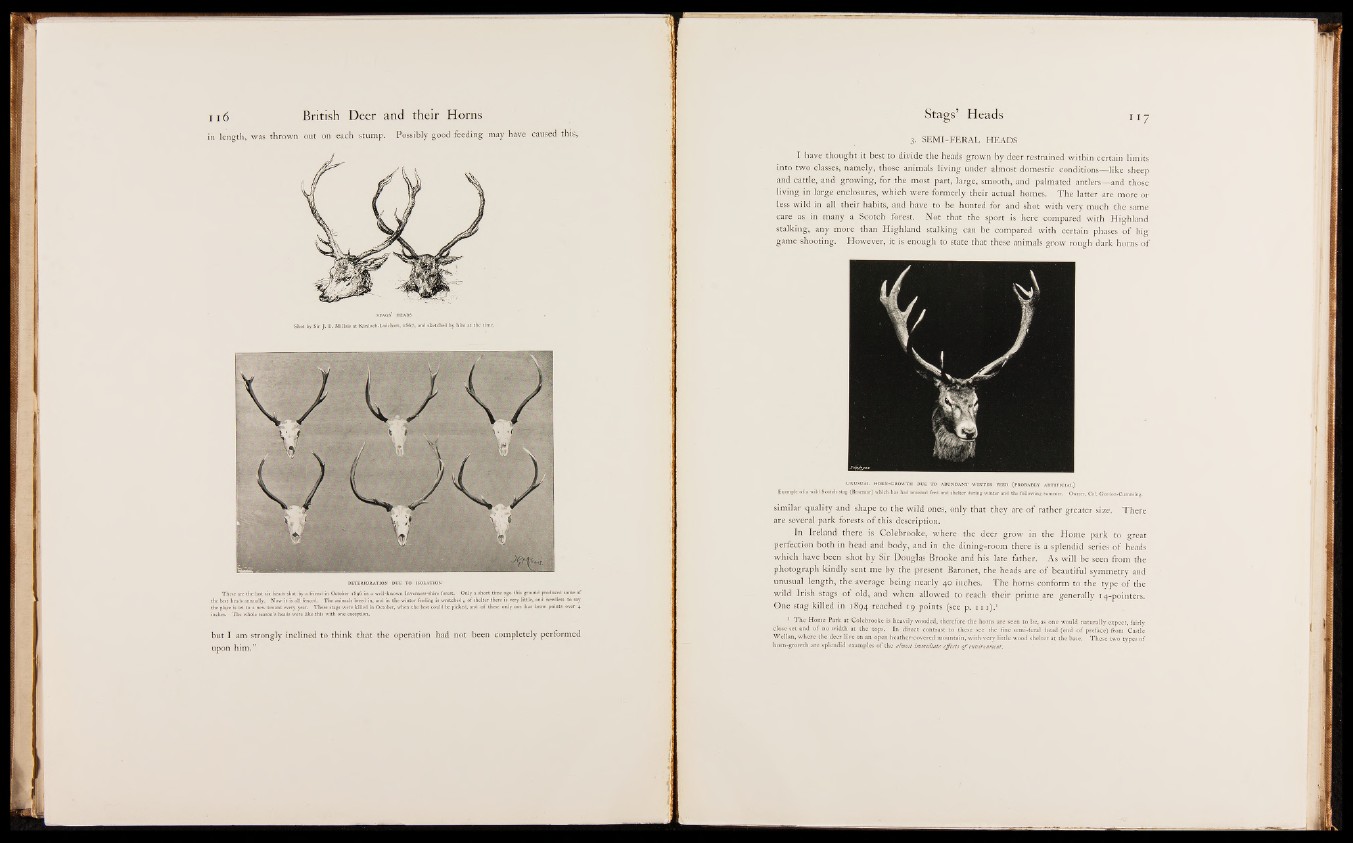
i i 6 British Deer and their Horns
in length, was thrown out on each stump. Possibly good feeding may have caused this,
Shot by Sir J. E. Millais at Kinloch-Luichart, 1867, and sketched by him at the time.
DETERIORATION DUE TO ISOLATION
These are the last six heads shot by a friend in October 1S96 in a well-known Inverness-shire forest. Only a short time ago this ground produced some of
the best heads annually. Now it is all fenced. The animals breed in, and in the winter feeding is wretched ; of shelter there is very little, and needless to say
the pla.ee is let to a new tenant every year. These stags were killed in October, when the best could be picked, and of these only one has brow points over 4
inches. The whole season’s heads were like this with one exception.
but I am strongly inclined to think that the operation had not been completely performed
upon him.”
Stags’ Heads 1 1 7
. '^. SEMI-FERAL HEADS
I have thought it best t d ^ M p t h e beads grown by deer r e ^ h S within certain limits
into two classes, namely, those animals living under almost domestic conditions— like sheep
and cattle, and growing, for the most part, large, smooth, and palmated antlers— and those
living in large enclosures, which were formerly their actual homes. The latter are more or
less wild in all their habits, and have to be hunted for and shot with very much the same
care as. in many a Scotch forest. Not that , the sport is here compared with Highland
stalking, any more than Highland stalking can be compared with certain phases o f big
game shooting. However, it is enough to state that these animals grow rough dark horns o f
■ UNUSUAL HORN-GROWTH DUE TO ABUNDANT WINTER FEED (PROBABLY ARTIFICIAL)
Example of a wild Scotch stag (Braemar) which has had unusual feed and shelter during winter and the following summer. Owner, Col. Gordon-Cumming.
similar quality and shape to the wild ones, only that they are o f rather greater size. There
are several park forests o f this description.
In Ireland there is Colebrooke, where the deer grow in the Home park to great
perfection both in head and body, and in the dining-room there is a Splendid series o f heads
which have been shot by Sir Douglas Brooke and his late father. As will be seen from the
photograph kindly sent me by the present Baronet, the heads are o f beautiful symmetry and
unusual length, the average being nearly 40 inches. The horns conform to the type-of the
wild Irish stags o f old, and when allowed to reach their prime are generally 14-pointers^
One stag killed in 1894 reached 19 points (see p. 1 1 1).1
1 The Home Park at Colebrooke is heavily wooded, therefore the horns arc seen to be, as one would naturally expect, fairly
close set and of no width at the tops. In direct contrast to thèse see the fine semi-feral head (end of preface) from Castle
Wellan, where the deer live on an open heather-covered mountain, with very little wood shelter at the base. These two types of
horn-growth are splendid examples of the almost immediate effects of environment.